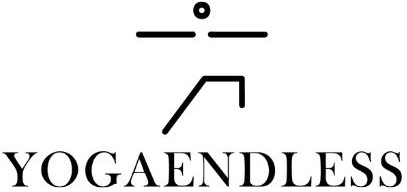Parighasana (Gate Pose): A Gentle Way to Expand Your Body and Breath

In today’s fast-paced world, we often forget to stretch—not just our bodies, but our breath, our minds, and our awareness. Parighasana, or Gate Pose, is a quiet yet powerful yoga posture that reminds us to do just that. Perfect for beginners and those returning to their practice, this asana gently opens the side body, encourages deeper breathing, and cultivates a sense of calm presence. It’s especially helpful for people who sit for long periods, experience stiffness in the spine or shoulders, or feel mentally closed in.
What is Parighasana?
Parighasana comes from the Sanskrit word parigha, which means “bar” or “gate latch.” This posture resembles the side opening of a gate, symbolizing the opening of the body and breath. By engaging in this pose, you create space not only in the physical body but also in the lungs and diaphragm, allowing for deeper, more relaxed breathing. It is traditionally practiced toward the middle or end of a yoga sequence to encourage openness and stillness.
How to Do Parighasana (Step-by-Step Instructions)
- Begin in a kneeling position on your mat, keeping your spine upright and your hips stacked over your knees.
- Extend your right leg straight out to the side, keeping the sole grounded if possible. Your toes can face forward or slightly up, depending on your comfort.
- Raise both arms overhead as you inhale, lengthening your spine and grounding through your sitting bones.
- Exhale and lean your upper body to the right, placing your right hand gently on your shin, ankle, or a block for support.
- Extend your left arm over your head, reaching in line with your left ear. Keep your chest lifted and avoid collapsing forward.
- Keep both sides of your waist long and ensure your torso is in the same plane as your extended leg, not twisted forward or back.
- Gaze upward or forward, depending on what feels comfortable for your neck.
- Stay in the pose for 3 to 5 deep breaths, then return to the center and repeat on the opposite side.
Why You Should Practice Parighasana?
Parighasana may appear simple, but its benefits go beyond the surface. Regular practice can improve posture, increase awareness of the breath, and release deep-seated tension in the sides of the body. It offers a deep, internal stretch that supports both physical and emotional balance.
This pose is especially helpful for:
- People with tight intercostal muscles (the muscles between the ribs), which restrict breathing.
- Those looking to increase flexibility along the spine and torso.
- Anyone seeking a restorative, low-impact posture to support mindfulness.
Parighasana also stimulates abdominal organs, making it beneficial for digestion and circulation. It prepares the body for deeper, more expansive poses and encourages balance and symmetry in the body.
Common Mistakes to Avoid
- Collapsing the chest: Keep the chest open and lifted, rather than curving forward
- Overreaching or straining: Focus on a gentle stretch rather than trying to touch your toes. Use a block or rest your hand higher up the leg if needed.
- Hyperextending the knee: Keep a slight bend in the extended leg if you feel any strain behind the knee.
- Ignoring alignment: Ensure your hips stay level and your spine remains long to avoid stress on the lower back.
- Parighasana teaches us that even the subtlest movements can offer profound benefits. This posture is not about pushing the limits of flexibility but about expanding awareness. As you breathe into the stretch and create space along your ribs, you may find a similar spaciousness in your thoughts. The simplicity of Gate Pose invites you to slow down, listen inward, and rediscover the power of a single deep breath.
In your next yoga session, allow Parighasana to be your reminder to open the gates—to your breath, your body, and your present moment.
